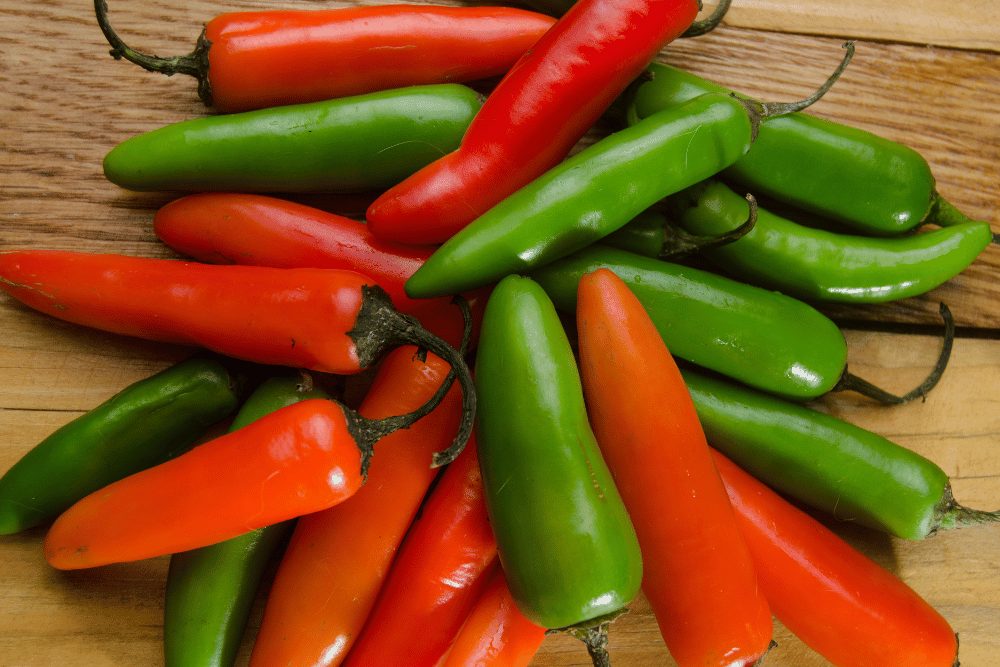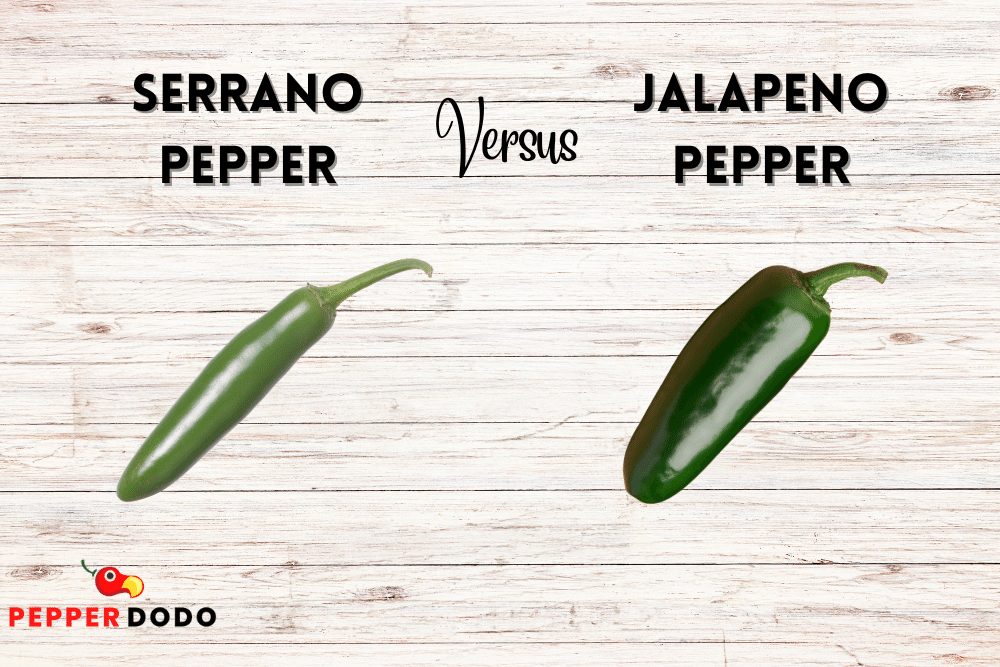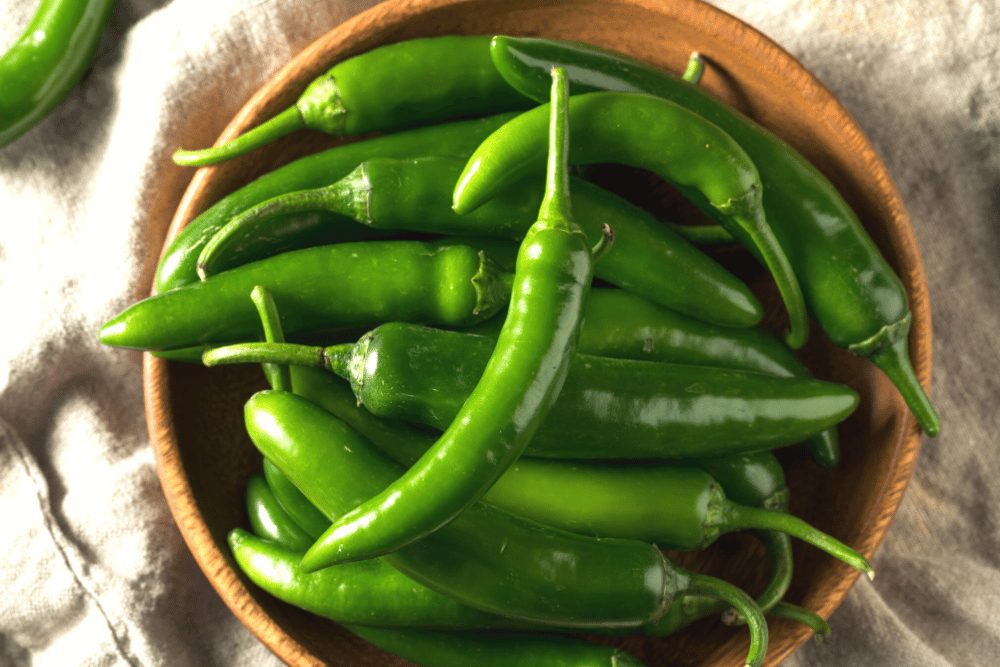Also called serrano peppers, serrano chilis, or serrano chili peppers, chile serranos are the second most used hot peppers in Mexican cuisine after jalapenos. They are preferred for the heat and rich flavor they add to both cooked and raw dishes.
What Is A Serrano Pepper?
A chile serrano is a Mexican chili pepper of the Capsicum annuum species grown for its heat and rich flavor in the mountainous regions of the Mexican states of Hidalgo and Puebla.
Chile serranos are the second most used chile pepper in Mexico after the famous jalapenos.
Origin
The serrano chile originates in the mountains of Hidalgo and Puebla in Mexico, the latter being the state from which poblano peppers originate.
The name of the pepper is Spanish for ‘from the mountains’ from the Spanish word for mountains, ‘sierras.’
Besides Mexico, serrano peppers have found their way to other parts of the world, especially the US, though they aren’t as prevalent as jalapenos with American chefs and home cooks.
Color
Serrano peppers are green when unripe and turn red, yellow, brown, or orange when fully ripened. Purple serranos are purple before turning red at full maturity.
The peppers can be distinguished by their color at full ripening. Those that turn red are called red serranos, the most common variety.
You can harvest and eat the peppers at any color during their maturity cycle.

Shape And Size
Chile serranos are torpedo-shaped peppers with a uniform conical shape tapering to a rounded pointy end. They average 1-4 inches long and about 0.5 inch wide.
Texture
The skin of a chile serrano pepper is smooth, glossy, and firm. Beneath the thin non-waxy skin is a crisp, thick flesh and cream-colored seeds in a small cavity space.
What Is The Flavor Of Serrano Chiles?
One reason that sparks confusion between serrano chiles and jalapeno peppers is that they have a similar heat and flavor profile.
Both green jalapeno peppers and serranos have a bright taste with grassy notes. Green serranos have a bit more depth to their flavor profile, with a semi-sweet, crisp, earthy, slightly smoky flavor with fresh-tasting spice.
The freshness and flavor increase as the peppers mature and change color. Fresh red serranos are sweeter, more acidic, and earthy. Roasting the peppers adds smokiness and earthiness to more identifiable levels.
How Hot Are Serrano Peppers?
At 10,000-23,000 Scoville Heat Units on the Scoville Scale, serrano peppers are medium to medium-hot peppers.
Serranos are much hotter than guajillo peppers (2,500-5,000 SHUs), dried overripe poblano peppers, mulato chili (2,500-3,000 SHUs), and ancho peppers (1,000-2,000 SHUs).
The least hot serrano chile will have the same heat level as the hottest chipotle pepper (5,000-10,000 SHUs). Serranos generally fall in the same heat category as manzano peppers (12,000-30,000 SHUs) and chile de arbols (15,000-30,000 SHUs).
Others like the Carolina reaper, cayenne, scotch bonnet, and habanero peppers will be much hotter than serrano peppers.
Generally, the spiciness of serrano peppers varies with pepper size, maturity, and duration of exposure to sunlight. Smaller red serranos are hotter and sweeter than their green counterparts of the same size.
Is Chile Serrano The Same As Jalapeno?
As mentioned, people often confuse chile serranos with jalapeno peppers. However, these are two different peppers despite both being in the Capsicum annuum species.
Both peppers share the same colors, especially green when unripe and red when fully ripened. The green versions are both edible.
Both peppers also have a similar shape and flavor profile.
Where jalapeno peppers and chile serranos differ is in their size and heat level. Chile serranos are smaller, narrower, and have thinner walls and less cavity space. Serranos are not ideal for stuffing, while the jalapeno excels at being stuffed with cheesy goodness!
Jalapenos are also milder than serrano chiles at 2,500-8,000 SHUs.

What Are Serrano Chiles Good For?
While the thick walls and small cavity of serrano make them a poor choice for stuffing, their heat and flavor make them ideal for several use cases. You can use serrano peppers for the following:
- Pan-frying them for chiles toreados, a classic blistered pepper appetizer.
- Pureeing with other ingredients to make a dipping sauce.
- Eating them raw in sandwiches, salsas, salads, and guacamole.
- Making red serrano hot sauce, green serrano pepper sauce, or sriracha hot sauce (made with red serranos).
- Cooking them into stews, soups, and chilis.
- Making dried serrano pepper powder to use as a dry rub.
- Rehydrating smoked, dried serrano peppers for sauces.
- Making chili oil.
- Drying and grinding into pepper flakes.
- Making pickled peppers for salads, sandwiches, or as a side for grilled animal proteins. In areas where sport peppers aren’t available, pickled serranos are a spicier stand-in.
Besides these uses, the peppers are also good for popular serrano pepper recipes like pico de gallo, salsa verde, machaca con huevos, huevos rancheros, cilantro and serrano pepper Mexican rice, spicy serrano pepper chimichurri sauce, and giardiniera.
Where To Buy Serranos
Unripe serrano peppers are more common at local grocery stores and Mexican markets than ripe versions. The green chiles are also available in the form of dried green serrano pepper powder online.
Specialty online stores carry dried serrano chiles, though they are rare in this form.
If you want fresh or raw serranos in the US, you can find them in farmers’ markets in the summer. The key thing to remember is to ensure you aren’t buying green or red jalapenos confused with serranos of the same color.
Can You Grow Serrano Peppers?
Serrano peppers are very easy to grow in the home garden!
Rich, loamy soils with pH 7.0-8.5 are ideal for serranos. Use homemade compost manure to enrich the soil before planting.
You can find serrano pepper seeds online or from your local nursery. Plant stores may also have seedlings in the late spring that are ready to go directly in your garden.
If you want to grow any pepper plant from seed, you should start serrano seeds indoors about eight weeks before transplanting them outdoors in containers, gardens, or greenhouses.
Like other chile peppers, serranos require full sun, enough water, and warm temperatures during summer growing seasons. They thrive in regions with hot summers and milder winters.
Serrano pepper plants are highly prolific and can bear up to 50 pods per plant in each growing season. Now that’s a whole bunch of peppers!
Once they ripen and you harvest them, you can store serrano peppers in paper towels or plastic bags for up to two weeks in a crisper drawer of your fridge.
Sliced serranos can remain frozen for up to a year, while pickled ones stay for up to three weeks in the fridge.
Substitutes For Serrano Chilis
Since jalapeno peppers have a similar taste profile to serranos, you can use them to replace the latter in cooked and raw dishes.
You can also use as manzano peppers or chile de arbols in place of serranos.

